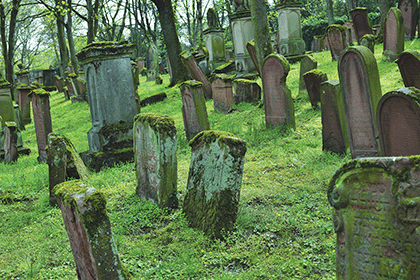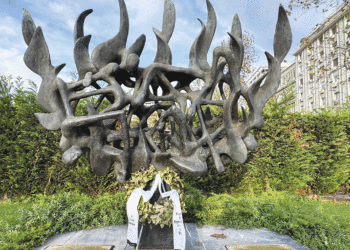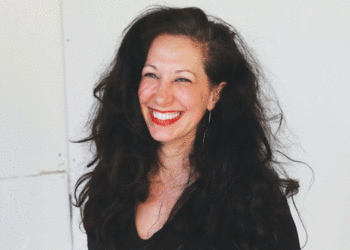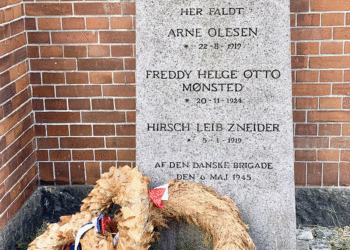By CARLA WALDEMAR
I’m back in the land of my roots. My mother’s kin hailed from Germany way back when, so every time I visit, I feel a special bond. Even more so on this visit because I’ve made it my mission to explore a special feature of my heritage: the history of the country’s Jews.
That history is as deep as it is checkered.
In the Old World
I started my trail in Frankfurt. After shedding jet lag in the newly refurbished Westin, I headed for Römer, the Old Town’s historic square, to meet my guide through the city’s Jewish history. At the first-ever parliament convened here, in 1848, a Jew was tapped to help write the new constitution. But, less than a hundred years later, in 1938, the city’s Jewish mayor was forced to flee the Nazis.

Jews had arrived here as traders with the Roman army and stayed on under the protection of the bishop, until the plague — clearly the “fault of the Jews,” the usual scapegoats — incited the first pogrom. The pogrom of 1938 was the last of many.
Today the Museum Judengasse anchors the former ghetto, unearthing the remains of homes and streets where life once flourished. A second Jewish museum records 800 years of local family life, ranging from the wealthy Rothschilds to Anne Frank’s family. Prior to World War II, 30,000 Jews lived here; at its end, 150 survived. This evening as I wander through Sachsenhausen, the “Brooklyn” to Frankfurt’s “Manhattan,” a shopkeeper kindly guides me to my dinner site when I become lost in the tangle of its streets. Kindness reigns once again.
By morning’s light I hop a train for Mainz, one of three cities (with Worms and Speyer—abbreviated as SchUM) collectively designated as a United Nations World Heritage Site in 2021. And I arrive hungry. Monika, the uber-concierge at the Rhine-side Hilton, steers me straight to the market square. Wilma Wunder, an inviting café with tables ideal for people watching, feeds me lunch daily — everything from Caesar salad to cheesy spaetzle noodles and, of course, the ice cream that every German seems to require as part of his minimum daily requirement.
But back to my mission! This city, boasting over 2,000 years of history, anchors one of the very oldest Jewish settlements in the land. It’s an epicenter for scholarship, starting in the 10th century. By the 1300s, in this “Jerusalem on the Rhine,” it’s the usual story of plagues, pogroms and expulsions. But by the 1700s, it flourished once more as the center point for Central European trade.
My guide, Claudia, leads me through the Jewish cemetery, launched in the 1700s — the oldest and biggest, she says, in Central Europe, with its 1,500 moss-covered tombstones, including some salvaged from an earlier site dating back to 1049. Later, Jews were made equal citizens by Napoleon as he marched through Mainz.
Then on to the new — the amazing New Synagogue of 2010, erected on the site of a long-standing one destroyed in 1938, in the Kristallnacht pogrom. Its silhouette, in shimmering green tiles, assumes the shape of Hebrew letters, while Hebrew words blanket the interior walls as well. The congregation’s precious Torah was whisked out during the pogrom and hidden in a Catholic seminary, which, after the end of the war, returned it to its new home.
As I stroll along the Rhine that flows near my hotel, I spot a plaque marking the Nazis’ infamous book burning. Later, in the Archaeology Museum — a little gem of local history starting with a magnificent mosaic floor from Roman times — I’m thrilled to discover not only Roman coins and daggers and such, but also thousand-year-old Jewish gravestones with their time-worn Hebrew letters.
Mainz also won my heart (and palate) as a swell restaurant town. Hof Ehrenfels boasts a magical garden courtyard, while Heiliggeist delivered a traditional veal schnitzel. And so did tiny, welcoming Weinbar Wilhelmi, where I sipped a glass of Grauburgunder amid the locals. Life is wunderbar as, in early morning, I set off for Worms — another town of the Middle Ages tucked inside a city wall constructed in 900 C.E.
Jews were granted the right of residence inside it on Judengasse (Jews Alley), gated at both ends, and in 1036 a synagogue was built. By 1212, an adjoining women’s section provided holes in the wall to enable the ladies to listen to the men-only services. In fact, by 1275 a female cantor was employed. A mikva (ritual bath), too.
Life proceeded peacefully until the 14th century, when murdering mobs rampaged down Judengasse. In 1615, another pogrom destroyed the synagogue. Today I’m clambering down, down the steps below ground level to visit a well-preserved mikva; the synagogue, with its menora and Torah sanctuary, though desecrated on Kristallnacht, is being restored.
The city’s Jewish cemetery is the oldest in Europe, explains my guide, Ursula, with tombstones dated as early as 1058. By luck alone, the cemetery was overlooked during Nazi rule and stands, mossy, intact and serene.
Speyer is next on my agenda. The morning’s train (so quiet, so punctual: this is Germany, after all) sped me to Speyer, the final stop in my pilgrimage. Of course, Jewish arrival had begun far earlier when, in 1084, the town’s bishop invited them here to stir up trade. For centuries all went well, until 14th century pogroms drove the Jews away.
It took until 2001 for the synagogue of 1104, with its women’s prayer hall and nearby mikva, to reopen. As I clambered down the bath’s below-street staircase, I marveled at its pristine state and contemplative nature, abiding for centuries. Today a somber memorial naming all those killed by the Nazis occupies the site of a former synagogue nearby. And where books were once burned now stands a free library.
Good times have returned, indeed. Speyer’s main avenue, leading from a town-wall tower to the mighty cathedral, exudes a relaxing, almost-Mediterranean spirit, lined with outdoor cafés and (of course) ice cream shops.
Jews were invited by its bishop in the year 1000 C.E. to settle here under his protection. A synagogue from 1104 is under restoration, and nearby a lovely mikva — the oldest one north of the Alps in its original state — welcomes visitors to tour. But the good times were, as usual, too good to be true. A plague (the “Jews’ fault,” some said) decimated the community in 1500, and it took the arrival of Napoleon, centuries later, for Jewish life in Speyer to resume. Today a small new Jewish Museum also welcomes visitors.
These three SchUM cities—Mainz, Worms and Speyer, medieval in their roots — prove especially mesmerizing today for anyone and everyone who enjoys a glance back into history — or simply a chance to enjoy enchanting cafés, entertaining museums and delightful riverside vistas off the beaten tourist track. To plan your own experience, visit germany.travel.
***
Carla Waldemar is an award-winning travel writer based in Minneapolis.
(American Jewish World, December 2023)




















